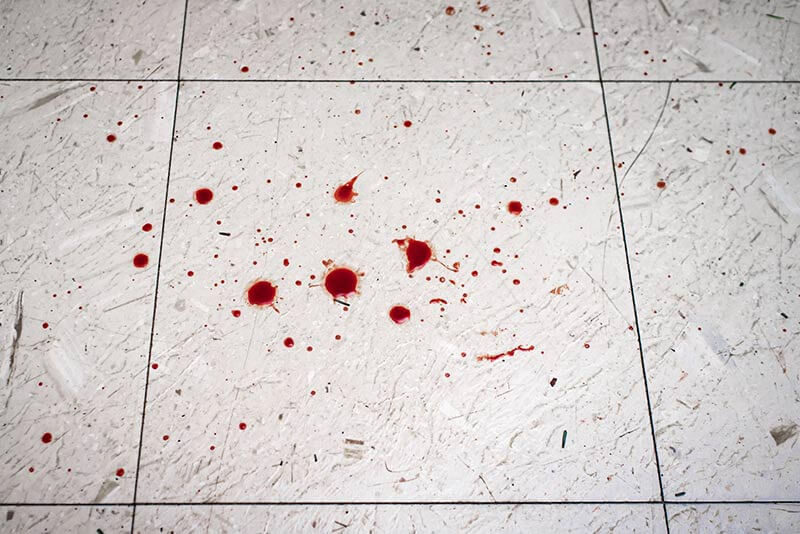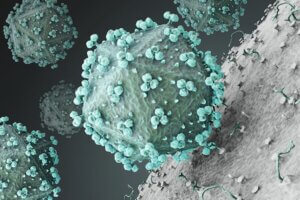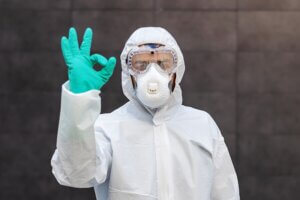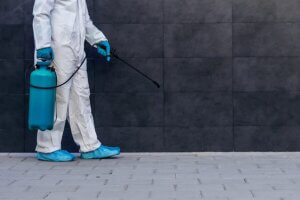BLOG

Best Practices For Blood Cleanup And Sanitisation
Best Practices For Blood Cleanup And Sanitisation
Blood cleanup is an essential yet often overlooked aspect of maintaining public health and safety. Whether it occurs in a home, a workplace, or public spaces, effective blood cleanup is vital for preventing the spread of infectious diseases and ensuring a hygienic environment. We’ll delve into the best practices for blood cleanup and sanitisation, as well as highlight key strategies and techniques that adhere to Australian standards.
Understanding The Risks

Blood and bodily fluids can be carriers of numerous infectious agents, including but not limited to Hepatitis B, Hepatitis C, and HIV. These pathogens pose significant health risks, making it crucial to handle blood cleanup with the utmost care. Personal protective equipment (PPE) such as gloves, protective eyewear, and face masks are indispensable to minimise direct contact with blood and reduce the risk of cross-contamination.
Pre-Cleaning Assessment
A thorough assessment of the affected area is vital before initiating the cleanup process. It’s important to gauge the extent of blood spillage and understand the types of surfaces that have been contaminated. Different materials, such as porous surfaces like fabrics and upholstery, require specific cleaning approaches compared to non-porous surfaces like tiles and countertops.
Containment And Removal
Effective containment is key to preventing the spread of contaminants. For small spills, absorbent materials such as paper towels or disposable cloths are suitable for initial cleanup, followed by careful disposal in biohazard bags. Larger spills demand more comprehensive approaches, including the use of commercial-grade biohazard spill kits, which are designed to handle substantial amounts of blood safely.
Cleaning And Disinfecting

Once the initial removal of blood is completed, the next critical step is the thorough cleaning and disinfection of the area. Selecting an appropriate disinfectant is crucial—one that is hospital-grade and proven effective against a wide range of pathogens. The disinfectant should be applied meticulously, ensuring it remains on the surface for the prescribed duration to achieve optimal germicidal action.
Handling Materials And Waste
Materials used in the cleanup process, including contaminated gloves, cleaning cloths, and PPE, must be disposed of responsibly. Australian biohazard waste management regulations mandate specific disposal methods, which usually involve the use of clearly marked biohazard bags and containers. Moreover, the disposal process should involve licensed biohazard waste removal services to ensure compliance with health and safety standards.
Sanitisation And Odour Control
In cases of extensive blood spillage, particularly in confined spaces, sanitisation and odour control are critical. This often involves using advanced equipment like ozone generators or fogging machines, which not only eliminate residual odours but also ensure a sterile and safe environment post-cleanup.
Post-Cleanup Inspection

A detailed inspection after the cleanup process is essential to confirm that no area has been overlooked. This includes re-examining the cleaned surfaces, ensuring proper disposal of all used materials, and verifying the complete sanitisation of the area. A meticulous inspection guarantees that the space is restored to a safe and hygienic state.
Professional Blood Cleanup Services
Professional blood cleanup services are often the best recourse for handling complex or hazardous blood spill situations. These services are equipped with the necessary expertise, specialised equipment, and knowledge to ensure comprehensive cleaning, disinfection, and restoration of the affected area.
Training And Awareness
For businesses and organisations, fostering awareness and providing training on blood cleanup procedures is imperative. This not only equips employees with the knowledge to handle potential blood spill incidents safely but also reinforces the importance of adhering to health and safety protocols.
Working With Professional Biohazard Cleaners

Blood cleanup, while challenging, is a critical component of maintaining hygiene and health standards. By adhering to these best practices for blood cleanup and sanitisation, individuals and organisations can ensure the effective management of such incidents. In complex or high-risk scenarios, the expertise of professional blood cleanup services like National Trauma (NTCSC) should be sought to guarantee the safety and wellbeing of all involved.
Give the team at National Trauma a call anytime day or night to find out more about our professional blood cleanup and remediation service.